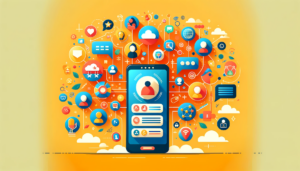According to Kantar WorldPanel, a market research international agency, during the last year, the market share of iOS continues to grow worldwide in countries such as the US, Australia, United Kingdom, Germany, France, Italy and rural China, curiously in the cities wins Android. In the only places where iOS decreases has been Japan and Spain.
In a market as demanding as the USA, the operating system of Google lost a market share of 1.8% and on the other hand, iOS gained almost 3%. If we see in Europe, three out of four smartphones use the Android operating system with 73.4% compared to 22.7% of iOS, but Apple’s operating system grows faster. In China globally Android reached the figure of 83.2% by climbing almost ten points during this period.
Regardless of the current data, Kantar likes to predict future trends and the last one has been quite surprising. After the good reception of the Nokia 3310 in the MWC 2017, they point out that Nokia returns to Europe through the big door hand in hand with Android, and that it would even reach Huawei thanks to the good brand image that users keep of them. after years offering products that combine good prices, great quality and offer a great experience for the user.
The latest smartphone OS data from Kantar Worldpanel ComTech reveals that in the three months ending December 2017 iOS made an overall share gain of 0.7 percentage points to 24.8% across the big five European markets, despite market share falling by 2.4 percentage points in the UK. Strong results in Spain and Germany, where iOS is nearing a quarter of the market, were also replicated in Urban China, Japan and Australia thanks to the performance of Apple’s newest three handsets.
iPhone’s market share is combined with a loyalty of almost 96%.
The flagship iPhone X made it into the top three best-selling devices in the month of December across Europe, Urban China, Japan, Australia and the United States. iOS loyalty reached a new high of 96% in the US, though its sales share fell 0.5 percentage points to 43.9% in the country.
Despite a strong performance by iOS across most markets, Android losses have to some extent been cushioned by the rapid fall of Windows, whose share now stands at under 1% in all markets except Italy.
Dominic Sunnebo, Global Director for Kantar Worldpanel ComTech comments, “The full results for the last quarter of the year show that Apple’s decision to release three new handsets over a staggered period, including the ultra high-end iPhone X, has been a sound one. With Apple’s existing release structure, expectations would always be that the flagship model would be the top selling device in key developed markets, but with the premium price of iPhone X, real life affordability has come into play. Given that in December iPhone X made it into the top three best-selling devices across all key regions, particularly in urban China where it was the top selling model, the pricing strategy seems to have been vindicated.”
“With all the attention focused on Apple, it’s easy to overlook the performance of Samsung in the final quarter of 2017. In Europe Samsung gave a very strong performance, with sales share of its smartphones up 2.2 percentage points to 31.3%, growing ahead of not just Apple but also Huawei, which has enjoyed a prolonged period of accelerated growth. In Spain, local brand BQ is starting to suffer as a result of Xiaomi’s official launch, its market share of sales dropping 3.8 percentage points to 8.5% in the three months to December.”
In the USA, the handset market continues to be dominated by Samsung and Apple, who reached a combined share of 70.8% in the last three months of the year. However, Motorola and Google have managed to make some inroads, with share up 0.5 percentage points and 1.0 percentage points respectively to 5.6% and 2.8%. Huawei, which suffered a setback just before CES after a deal with a major carrier fell through, stayed flat holding just 0.4% of the USA market.
Although the value of the brand and its revolutionary beginnings, iPhone is one of the least innovative devices today
When Steve Jobs went on stage and presented the iPhone, the surprise was not really as big as it may seem today. It had been known for some time that Apple would launch its own phone. Although there was a high degree of expectation. Among other things because the fever for mobile telephony had already begun and Apple was a reference in technology.
In fact, they had set foot in the sector by allying with Motorola to deploy iTunes on a phone. An experiment that by the way was a disaster. At that time the mobiles that many wanted to have were those of Nokia of superior range. Especially the Nokia N95, which has been introduced in September 2006 and reached the market in March 2007.
That Nokia by the way was revolutionary in many ways, as demonstrated by its advanced camera. Although it had a huge drawback: its embarrassing Symbian operating system was light years away from what ended up being iOS, the cornerstone of Apple’s phones and tablets.
When the iPhone was a reality, it produced a multitude of conflicting opinions. Especially for its price and the breakthrough absence of keyboard. But the telephone opened a door to a world that we could not even imagine in 2007: that of the omnipresence of smartphones.
The absence of keyboard was one of the things that caused controversy in the first iPhone.
Perhaps not even Apple suspected that the iPhone would end up being the beacon that will guide the sector. Well, the world of telephony was a jungle in which it was hard to break through. Although, yes, in recent years the iPhone, being key, is no longer the benchmark that was several generations ago.
Among other things because Samsung, after spending years blatantly copying Apple, eventually managed to go one step ahead of the Cupertino company in many ways. Something that was revealed when Steve Jobs died after Apple gave up the evidence to present the iPhone 6 … with screens of 4.7 and 5.5 inches. Something that clearly had to do with the unexpected boom of the Samsung Galaxy Note.
One of the pillars of the iPhone was from the beginning its system: iOS
In any case, the iPhone has transformed the lives of even those who have never had one. Above all to achieve the implementation of the first mobile operating system that worked simply and smoothly. In addition to making it exclusive, as they did with the operating system of the Mac in computers, so that no other phone could use it.
Android took a long time to live up to iOS. But from the first moment the battle between Apple and Google was fierce. Almost nobody discusses since this phone unleashed the massive use of applications. In fact, the arrival of the App Store in 2008 is probably one of the great technological milestones of the past decade.
Not long ago, Blackberry OS was the smartphone of the most demanding executives and users while the rest of the smartphone ecosystem lived with the already named Symbian. But everything has changed in such a short time that it almost seems like a dream. We are at a time when iOS and Android are fighting side by side and the market share of other operating systems is purely marginal.
Android provides freedom from the rigidity of iOS, which in turn guarantees stability, security and updates that cover the vast majority of the iOS device fleet. Although the battle is served and the price is a big gap against those of Cupertino can not fight, the reality is that it seems that their numbers continue to grow.



















